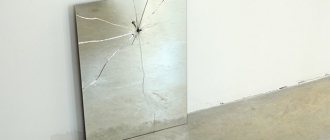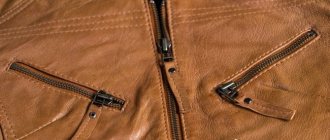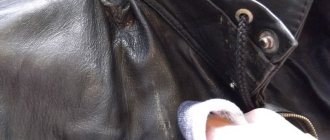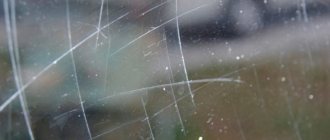Holes
Repairing holes on the surface is quite easy, because most often they are not too deep.
They arise from sharp blows with a heavy object, for example, with a hammer when beating meat.
First you need to clean the hole with a file to make the wax stick better. Then properly degrease the top of the hole with solvent or alcohol.
A tabletop made of chipboard or solid wood can be restored with your own hands.
After the degreaser has dried, heat the wax until soft. To make the final stage of work easier, it is recommended to immediately select a filler that matches the color of the material.
We seal the hole with wax, leaving a little of this material on the surface of the countertop.
After hardening, use a plastic spatula to remove excess from the surface.
We polish the repair area well with a felt rag. If the texture of the wax after polishing matches the rest of the surface, we complete the work.
If additional coating with furniture varnish is necessary, we carry out such manipulations. Some time after the varnish has hardened (16-24 hours), we polish it again with felt.
The tabletop is covered with a layer of varnish to secure the result.
Installation process
After ordering and manufacturing the components and doors, proceed with installation steps:
- Remove the old elements of the set and unscrew the front panel from each drawer;
- Remove the screws that are attached to the box. Use the old door as an example, mark on it the fastenings that will be on the new facade;
- Before installing the hinges, make a hole for the lock on the facade that you have marked;
- Now attach the hinges from the old doors into the hole;
- Hang the new doors, first attach the hinges at the top and then at the bottom;
- Change the front on drawers and cabinets;
- In the place where you made the marks, screw the screw onto the new facade. Check that you did everything correctly and check the strength of the fastenings.
Scuffs
Scuffing is one of the easiest defects to eliminate. The depth of the abrasion is small, just rub the damaged area with a furniture felt-tip pen. You should not work it directly on the surface. It is recommended to first paint a soft cloth, such as silk, with it. And then use this rag to thoroughly treat the abraded area.
Before you begin repairing the product, you should conduct a small diagnostic and assess the nature of the damage.
In this simple way you can deal with shallow abrasions. If the size of the defect is too large, we paint the surface with a felt-tip pen of the appropriate shade, and then polish the resulting area with a piece of cloth.
Using this technique, it is possible to blur the boundaries of processing with new paint and smooth them out visually.
If it is necessary to restore a varnished surface, before painting, use fine sandpaper to thoroughly clean the area of wear, degrease it, and only then paint. After the furniture marker has dried, we coat the work area with varnish, which we also polish 16-18 hours after application.
To avoid new scratches, it is better to cover the surface with a protective compound or transparent film.
Restoration of chipboard furniture: what you might need
- Soft furniture wax (wax putty). Used to seal chips, scratches, cracks on wooden and laminated surfaces of cabinet furniture, interior doors, laminate and parquet. Provides moisture resistance to the restored surface.
- Hard furniture wax (melt putty). Requires melting before use (for example, using a lighter, soldering iron or gas torch). Application is similar to soft furniture wax. Recommended for restoration of chipboard surfaces with high intensity of use (countertops, shelves, floor coverings).
- Retouching agents - felt-tip pens or alcohol-based markers, valve and fiber. With their help, the texture of the material at the restoration site after waxing is completed to make it less noticeable. Ordinary felt-tip pens in shades that match the furniture, strokes, paints, even shoe polish and iodine will also work.
- Fixing varnishes, polishes (best in the form of sprays and aerosols) for surface treatment after restoration. For coating after restoration of defects, returning surfaces to their former shine, masking abrasions and minor scratches.
- Melamine edging with adhesive for replacement trim.
- Two-component epoxy composition, PVA, dowels (chops), wooden plugs for filling holes from torn hinges and other fasteners.
- Tools – plastic spatula, sandpaper, abrasive sanding sponge (fine), utility knife, hair dryer or iron, chisel, non-woven wipes and rags for finishing.
Chips
Chips occur quite often, because in the kitchen there are a lot of dishes and cutlery with sharp edges.
To remove the chip you will need wax. Here, too, the main recommendation is to choose a material that matches the color of the countertop, because painting the wax base can be quite problematic.
Such damage to the edges of the tabletop will require even more labor-intensive repairs.
We cut it off or thoroughly sand the chipped area, melt the wax and apply it to the problem area. We wait for it to dry completely, polish it - and you’re done.
The molten composition is applied to the damaged area and given the desired shape.
If you need to tint the repair area or varnish it, we complete the restoration process with such work
After the wax has hardened, the excess is cut off and sanded.
Special means
You can get rid of defects in a matter of minutes using specialized furniture compounds. Some of them have a fairly high price, but in stores you can always choose an option that suits the cost.
stain
This is a material in the form of a liquid or emulsion that is applied to wood to give it a specific color. Products of this type are very relevant for eliminating various shallow abrasions, especially those that affect only the surface layer of varnish.
Treating a wooden tabletop with stain
It is advisable to apply stain to the entire countertop and door, otherwise the treated area will stand out strongly. You should paint an inconspicuous area of the furniture first to make sure the color matches. Afterwards, you can saturate the product completely, and polish it as it dries.
Regular liquid paint
It is better to completely paint old furniture that has a lot of scuffs. To do this, you can purchase alkyd or acrylic paint in the color you like. After thorough sanding and degreasing, the surface is painted and dried, then coated with a finishing wood varnish.
Painting old furniture
Oil polish
If the furniture had a layer of polymer composition on top, for example, polyurethane, you can cover up the scratches using a special oil polish. First, the area with the defect is cleaned until smooth with fine-grain sandpaper, dipped in mineral oil, and then covered with polish. It forms a smooth, shiny surface, carefully filling cracks.
Watco wood polish
Mastic
Another composition with which scratch restoration is carried out quickly and reliably. Mastic restores gloss on damaged substrates, repairs mechanical defects: chips, cracks, marks from animal claws. You can buy the product ready-made or make it yourself:
- Melt 40 g of beeswax in a water bath.
- Add 30 g of turpentine.
- Combine the mass with 10 g of alcohol.
- Mix everything and remove from the stove.
- Treat the furniture with a warm mixture using rags.
Ingredients for making your own mastic
This mastic is especially suitable for removing white spots and abrasions that have formed on products made of natural wood or MDF.
Pencil
Wax pencils help hide scratches on furniture in one motion. They are sold in all construction stores and come in a variety of shades to match the color of the wood, so choosing the right tool will not be difficult. The damaged surface must be wiped from dust, dried, and then carefully rubbed with a pencil.
Anti-scratch wax pencils in various shades
Some compositions require preliminary melting, which can be done using a water bath or a regular household hair dryer. The device is aimed at a pencil, the wax from which will flow directly onto the defect. After drying, the furniture is thoroughly polished with a dry cloth.
Hatch
A touch-up for restoring chips is considered a professional product and looks like a stationery proofreader. It is used to cover shallow seams, remove tears, scratches, and abrasions. A composition of this type is easily applied to furniture or floors, sets quickly, and is resistant to moisture and temperature changes. The stroke does not leave marks and remains resistant to abrasion for a long time. It is applied to the defect after cleaning the surface, and as it dries, the furniture is coated with varnish.
Furniture touch Master City
Wood wax
Wax can be used to restore bulk items, and not just to fill minor scratches. Such compositions are sold in two forms:
- Soft. Easy to use, easily rubbed into the problem area in a circular motion. After 15 minutes, the unabsorbed excess wax is removed with a rag. This wax is well suited for laminated substrates and natural wood.
- Solid. They are professional products and melt before application. As the base is lubricated, it is polished and the composition is rubbed into the damaged areas.
Hard waxes for furniture restoration
Marker
Some brands of furniture paint (such as MinWax) come in marker form. They are very easy to use. It’s enough just to rub it over the scratch, and then wait for the composition to dry, which happens literally in a minute. To add shine after painting over the defect, use wood polish.
Minwax Scratch Removal Marker
Scratches
Removing scratches from a surface is as easy as removing abrasions, and maybe even easier. Before starting work, degrease the surface. If the scratch is shallow, it can be quite simply rubbed with a piece of wax (often there is no need to even melt it).
If the scratches are deep, you can use soft wax.
If the scratch depth is more than 3 mm, we perform preliminary cleaning of the surface from dirt for better adhesion of the wax.
Then we polish the work area with a piece of felt. If necessary, tint with furniture varnish. It is recommended to use ear sticks for small scratches; for larger scratches you will need a brush of the appropriate width.
Finally, the tabletop should be coated with colorless varnish.
Note! If there are several deep scratches nearby, it is recommended to completely remove the surface layer of the countertop in this area. This will allow you to avoid repeated damage to the integrity of the treatment area due to exposure to moisture - even with the most painstaking work, microcracks will certainly remain and grow over time.
Wax is applied to the scratch using a rubberized spatula.
Recommendations for extending the life of kitchen furniture
Prevention will help to avoid scratches, peeling and swelling of the material.
Preventive measures:
- Additional processing. Waterproof sealant is applied to the joints between the sink and the table, as well as between the table and the countertop.
- Aluminum strips protect the integrity of the coating from moisture. An edge is installed on each side of the furniture. This must be done immediately after purchasing the furniture.
- Silicone prevents the coating from swelling. When installing the countertop, treat the entire surface adjacent to the stove.
- Waterproof sealant. When replacing the sink, the product is applied to all open areas of the table.
- Special stands. Whatever the material of the countertop, taking care of the coating will help extend its service life. You should not place hot objects on the table; it is better to place fabric or foam material under them.
You should also not put foods on the table that can change its color. It is better to use a board for cutting.
This is interesting:
How to remove scratches on a refrigerator - what can you use to rub it off and paint over it?
What to do with a crack on the hob.
Features of joining kitchen countertops to each other.
Cracks
Cracks on the surface of the countertop are the most common reason for its complete replacement. As the material most susceptible to negative influences, the top layer will certainly become unusable after some time. And the thinner and cheaper the material of the top layer of the countertop, the sooner it will begin to become covered with cracks.
If even small cracks appear on the countertop, urgent repairs are required - otherwise the crack may grow larger, and then the panel will no longer be repairable.
Before you begin work on restoring the countertop from cracks, it is necessary, in principle, to assess the feasibility of such work.
A wide crack in the top layer across the entire tabletop makes repair impractical. Even the most painstaking work will inevitably crack again after a while.
Glue is taken into the syringe and the crack is filled along the entire length. If it is very thin, a needle is put on the syringe for more precise coating.
If it is shallow and small, we proceed according to the standard scenario.
We clean, degrease, apply wax, polish. Additional painting and varnishing as needed.
It is recommended to immediately apply wax of a suitable shade; due to the large size of the cracks, even professionals are not always able to restore the uniform color of the surface.
A day later (after the glue has dried), the restored area is painted over in a suitable tone.
Repair or change
Is it worth it to start repairing a laminated chipboard countertop yourself? To do this, you need to assess the degree of destruction. Sometimes it is not profitable to repair; it is easier to purchase a new laminated surface.
Often it is necessary to update only the surface layer by fixing a small fragment, and everything else can be left unchanged. Wood is one of the materials most suitable for repair; it is easy to extend and insert patches. In the case of laminated chipboard, everything is a little more complicated. Therefore, it is better to undertake repairs when the damage is small.
If the damage is small, then you can do your own restoration. Otherwise, you will need to replace a separate piece of the panel.
Helpful advice! It is problematic to repair built-in furniture and kitchen appliances. A good way to update is to replace just one wood countertop. Sometimes you have to change the entire facade, but this is cheaper than modernizing the entire kitchen.
It happens that the new surface contrasts with other planes of the kitchen unit, and it makes no sense to completely restore the original appearance of the kitchen. Then it is recommended to find a creative method, for example, cover the surface with a beautiful pattern, cover it with glass exactly to the size of the tabletop and seal the ends.
Wetting the tabletop
Soaking is another fairly common case of tabletop damage. The reason for its appearance is prolonged exposure to moisture, so most often the edges are subject to such defects.
If the wood chip layer is swollen under the laminated film, it will take some effort to correct the situation.
Soaking immediately attracts attention, so many people strive to eliminate this problem as quickly as possible.
Note! Fixing this problem often requires complete removal of the countertop.
First, you should thoroughly dry the countertop. Then mechanical cleaning of the soaking area from rotten parts is carried out.
The restored area is covered with bars and clamped with a clamp. The product is left in this position for 24 hours until the glue dries completely.
After this, furniture glue mixed with sawdust is placed into the resulting cavity; you can even use the remains from the previous step.
Note! Now it is important to press the glued layers as best as possible on the wet side.
Leave the tabletop under load for at least 24 hours. The more pressure the load puts on the repair site, the smoother and more uniform the result will be.
Treating the ends with water-repellent sealant or silicone compounds will help prevent swelling of the wood-based base under the laminated film.
After the glue has dried, install the tabletop in place. It is recommended to treat the open and unprotected side surfaces of the tabletop with silicone sealant; it will protect against repeated damage.
FAQ
I liked the chipboard cabinet at the furniture store, but it had slabs on the back with a raw edge. Is such furniture dangerous in a residential area?
There is GOST, which allows that invisible joints of laminated chipboard do not need to be sealed. If you are so concerned about the presence of unsealed joints, you can seal them yourself with a special self-adhesive edge tape.
Is there a way to restore laminated chipboard furniture that has been damaged by flooding?
It is impossible to restore heavily wet laminated chipboard.
How to protect the laminated chipboard of a kitchen unit at the edges from water penetration?
Furniture damage can be avoided by pre-treatment. The joint must be dried, then coated with PVA glue. After it dries, apply construction sealant or silicone as additional protection.
Burns
Burn-through occurs when the surface is exposed to too hot dishes. Before you restore a kitchen countertop made of laminated chipboard, you need to get rid of the visible burn area. We work with sandpaper or a file, as necessary.
If the protective laminated layer is exposed to high temperatures, it will leave an unsightly burn mark.
And then we carry out the same algorithm as for a scratch - fill it with wax, sand it, paint it or varnish it.
By following our simple tips, you can easily, quickly, and most importantly, economically bring your countertop to its original form.
The best option is tabletops, the edging of which is made of aluminum tape.
Types and causes of damage
The most common defects that arise when using furniture made from chipboard are scratches, chips, loosening, deformation, peeling edges, torn hinges and fallen off facades.
The reasons for their appearance are different:
- careless transportation and improper operation;
- manufacturing defects;
- exposure to abrasive substances, including sand and dust;
- damage from the claws of pets or various sharp objects;
- frequent disassembly and assembly;
- weak fixation of fasteners or incorrect installation;
- heavy weight of doors and shelves;
- Frequent or careless opening and closing.











